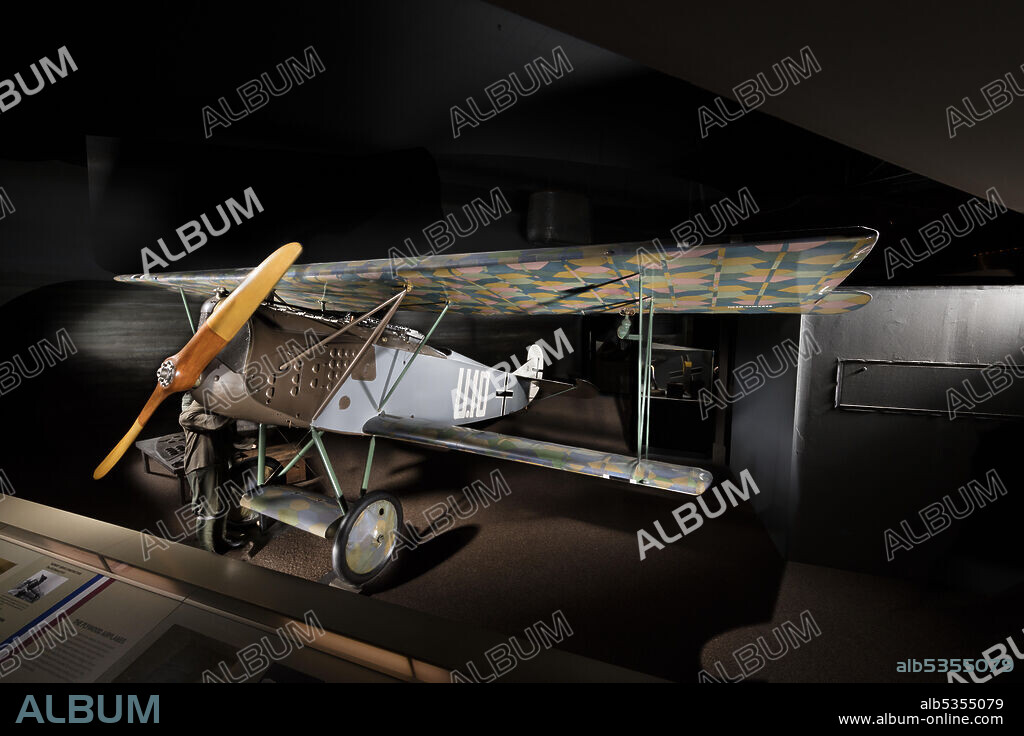alb5355079
OSTDEUTSCHE ALBATROS WERKE GMBH. Fokker D. VII,1918. Creator: Ostdeutsche Albatros Werke GmbH.

|
Add to another lightbox |
|
Add to another lightbox |



Buy this image.
Select the use:

Author:
Title:
Fokker D. VII,1918. Creator: Ostdeutsche Albatros Werke GmbH.
Caption:
Single-engine, single-seat, German World War I biplane fighter; 160-horsepower Mercedes D.IIIa water-cooled engine. Lozenge camouflage on wings. Fuselage gray and olive drab. In response to the loss of air superiority in late 1917, the Germans organized a competition for new fighter designs held in January 1918. The in-line engine winner was the Fokker D.VII. Fokker received an order for 400 aircraft. To meet the demand for the new fighter, Albatros, Fokker's chief competitor, also built the D.VII under license. Ironically, Albatros built more D.VIIs than the primary contractor and the Albatros product was of higher quality. When the Fokker D.VII appeared on the Western Front in April 1918, Allied pilots at first underestimated the new fighter because of its squarish, ungainly appearance, but quickly revised their view. The D.VII's unique ability to seemingly "hang on its propeller," and fire into the unprotected underside of enemy aircraft made it a highly feared combat opponent. The Armistice agreement requirement specifically demanding that all Fokker D.VIIs be immediately surrendered attested to the general high regard for the airplane.
Personalities:
Credit:
Album / Heritage Art/Heritage Images
Releases:
Model: No - Property: No
Rights questions?
Rights questions?
Image size:
8688 x 5792 px | 144.0 MB
Print size:
73.6 x 49.0 cm | 29.0 x 19.3 in (300 dpi)
Keywords:
1910S • 1ST WORLD WAR • 20TH CENTURY • AEROPLANE • AIR AND SPACE MUSEUM • AIR TRANSPORT • AIRCRAFT • AIRFRAME: WOOD • AIRPLANE • AVIATION • BIPLANE • CENTURY • COLOR • COLOUR • CONCEPT • COUNTRY • COVERING: FABRIC • CRAFT-AIRCRAFT • EDUCATION • EDUCATIONAL INSTITUTION • ENGINE: METAL • FIGHTER PLANE • FIRST WORLD WAR • FLIGHT • GERMAN • GERMANS • GERMANY • LOCATION • NASM • NATIONAL AIR AND SPACE MUSEUM • OBJECT • OBJECTS • OSTDEUTSCHE ALBATROS WERKE GMBH • OSTDEUTSCHE ALBATROS WERKE • PLANE • SCIENTIFIC INSTITUTION • SMITHSONIAN INSTITUTION • TECHNOLOGY • TRANSPORT • TRANSPORTATION • UMBRELLA • WAR • WORLD WAR I (1914-18) • WORLD WAR I • WORLD WAR ONE • WW1 • WWI
 Pinterest
Pinterest Twitter
Twitter Facebook
Facebook Copy link
Copy link Email
Email
